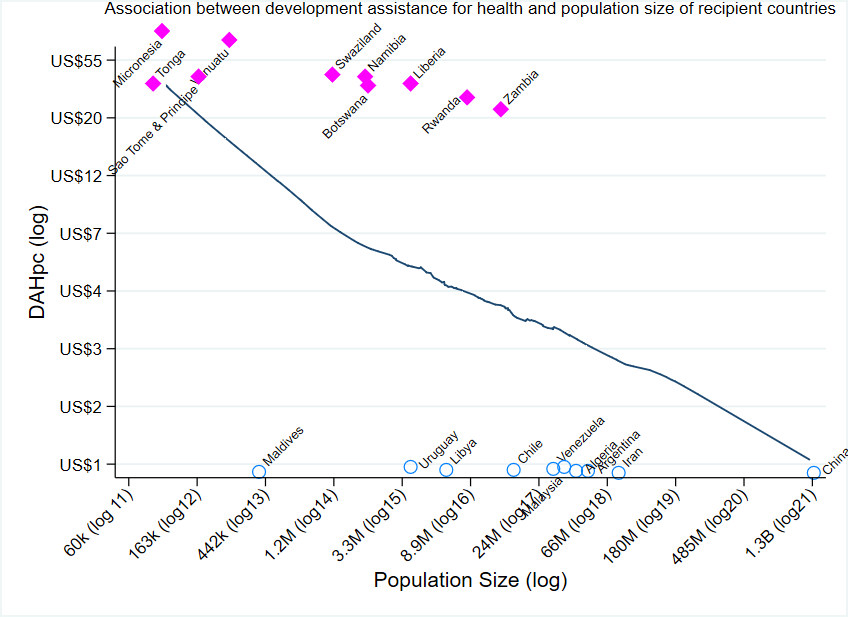A new study published in BMJ Global Health by Lene Martinsen and colleagues assessed the effects of population size on the amount of development assistance for health (DAH) that countries receive. Based on analyses of data for 143 countries spanning more than 20 years the study shows that larger population sizes is associated with significant decreases in per capita DAH.
For every one percent increase in population size, a country received between 0.1 and 0.3 per cent less in DAH after controlling for levels of economic development and health status. For example, in 2014 Lesotho with a population of 2.1 million received 31.1 USD per capita in DAH, while Cameroon with a population of 22.7 million received only 5.9 USD per capita.
The authors consider a number of potential rationales related to economy of scale, accountability, funders’ international influence, as well as recipients’ visibility and vulnerability. However, it is important to emphasize that the study has not studied causality. The researchers cannot rule out, for example, that the results are influenced by other factors not included in the study.
About 36 billion USD in DAH is allocated yearly and there is a broad international agreement that every person should have an equal right for coverage of basic health needs. However, this study points to a potential discrepancy and can provide an empirical basis for assessing whether the current allocation of DAH aligns to this principle.
The findings of this study provide a basis for funders and all other stakeholders to consider and debate current practices of allocating these funds, and whether a “small-country bias” is justifiable and effective.

Figure: Association between development assistance for health and population size of recipient countries. In 2014 the 10 countries receiving the highest amount of DAHpc are shown in pink square dots and the 10 countries receiving the lowest amount of DAHpc are shown in blue hollow circles.